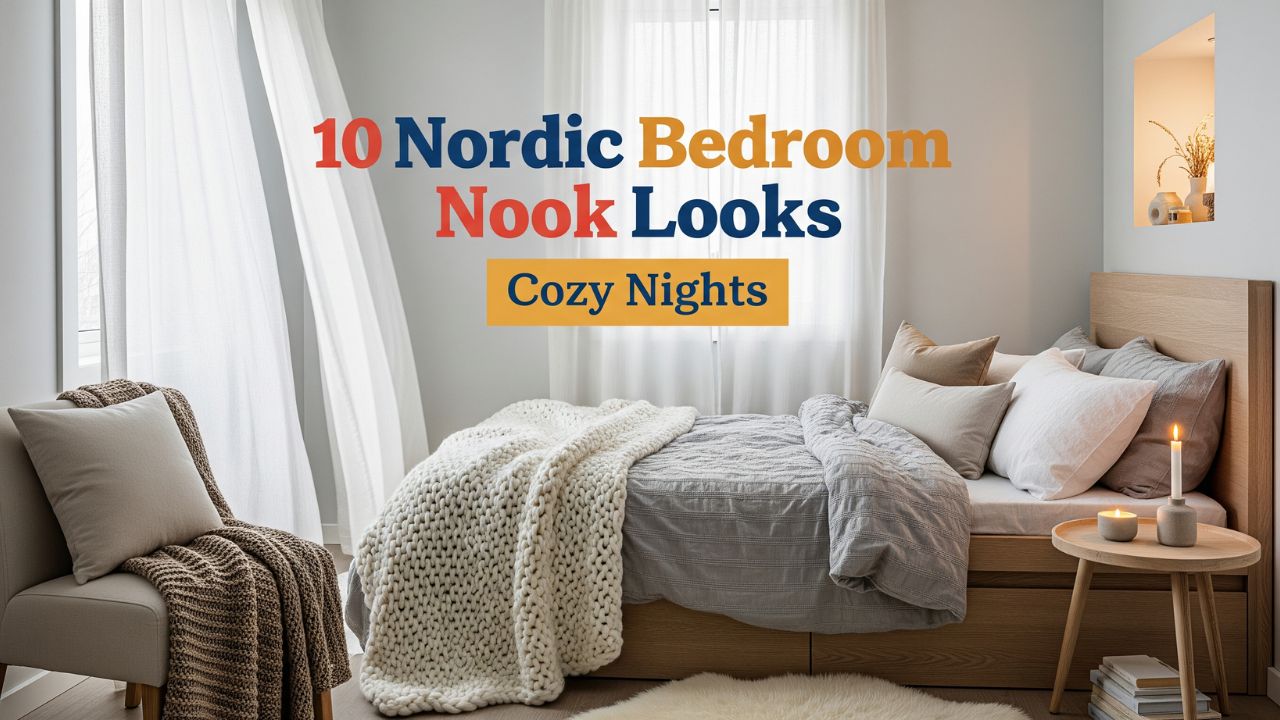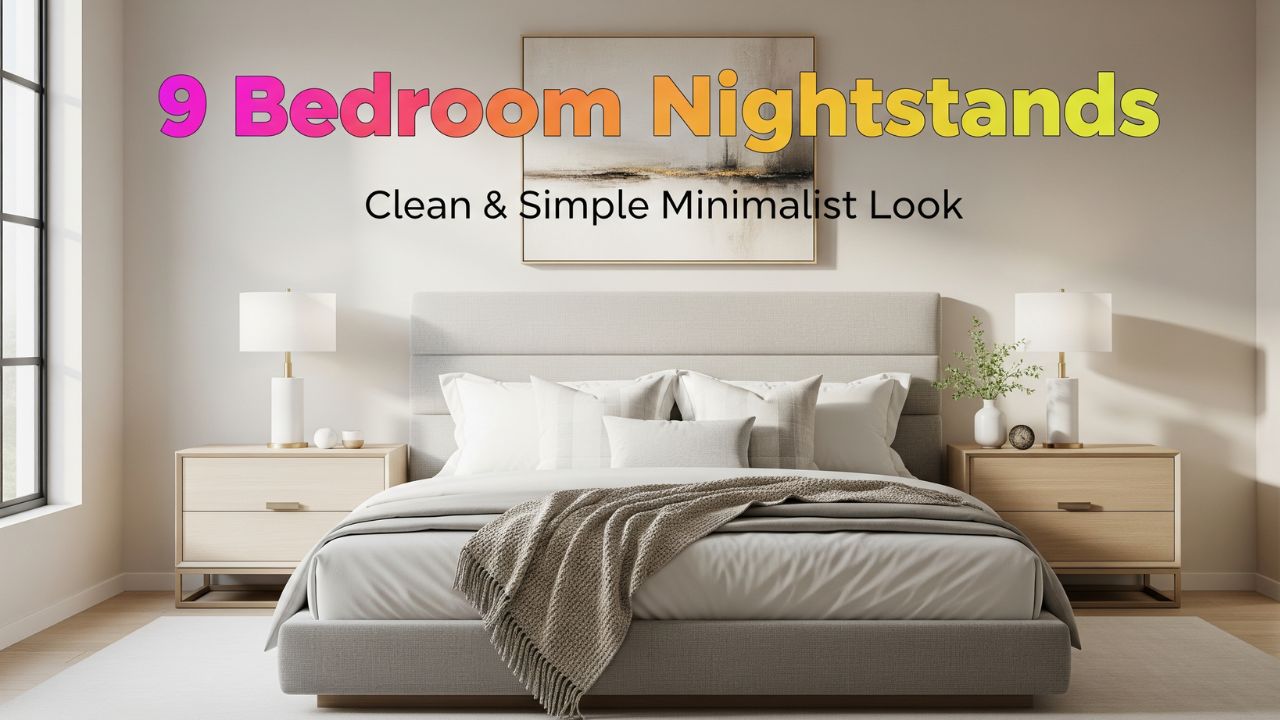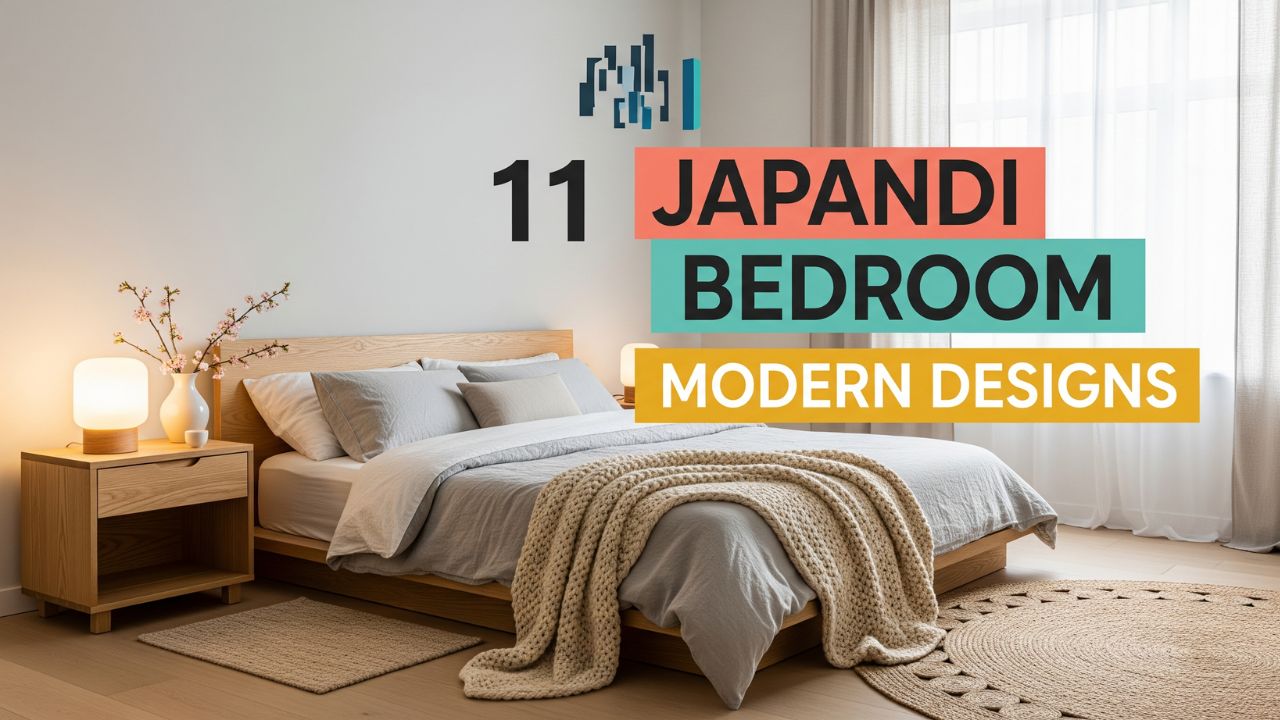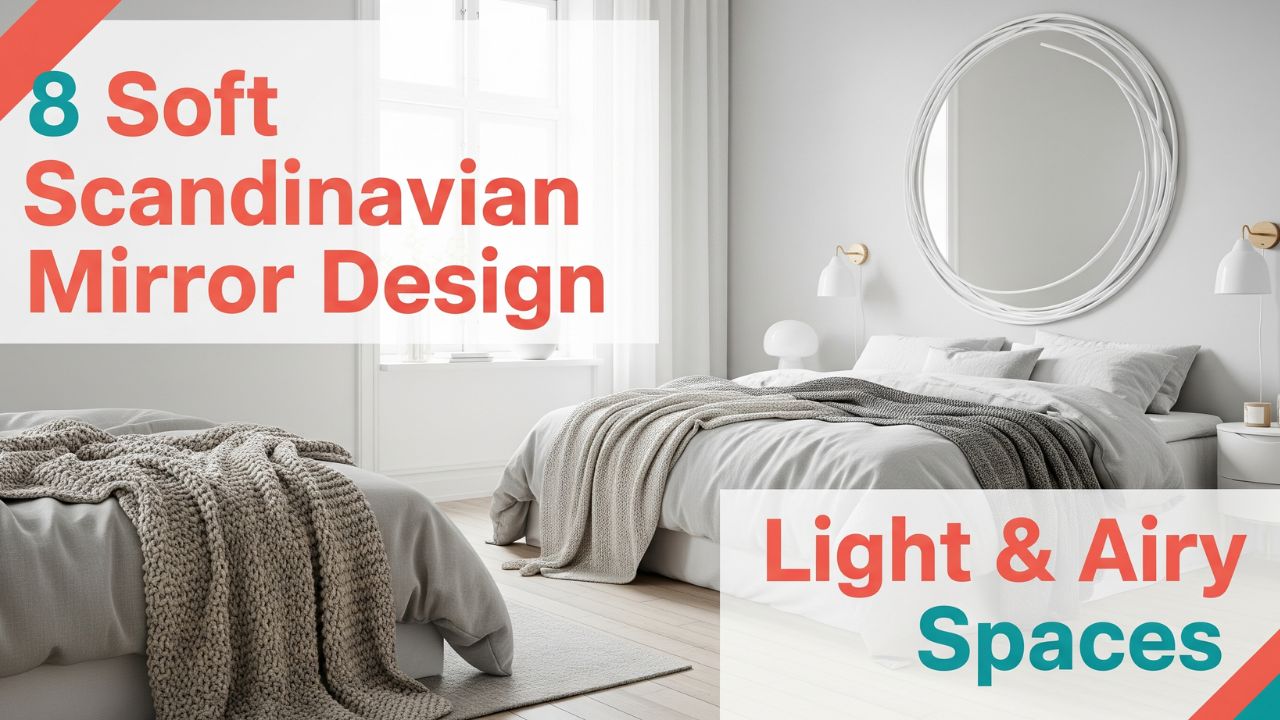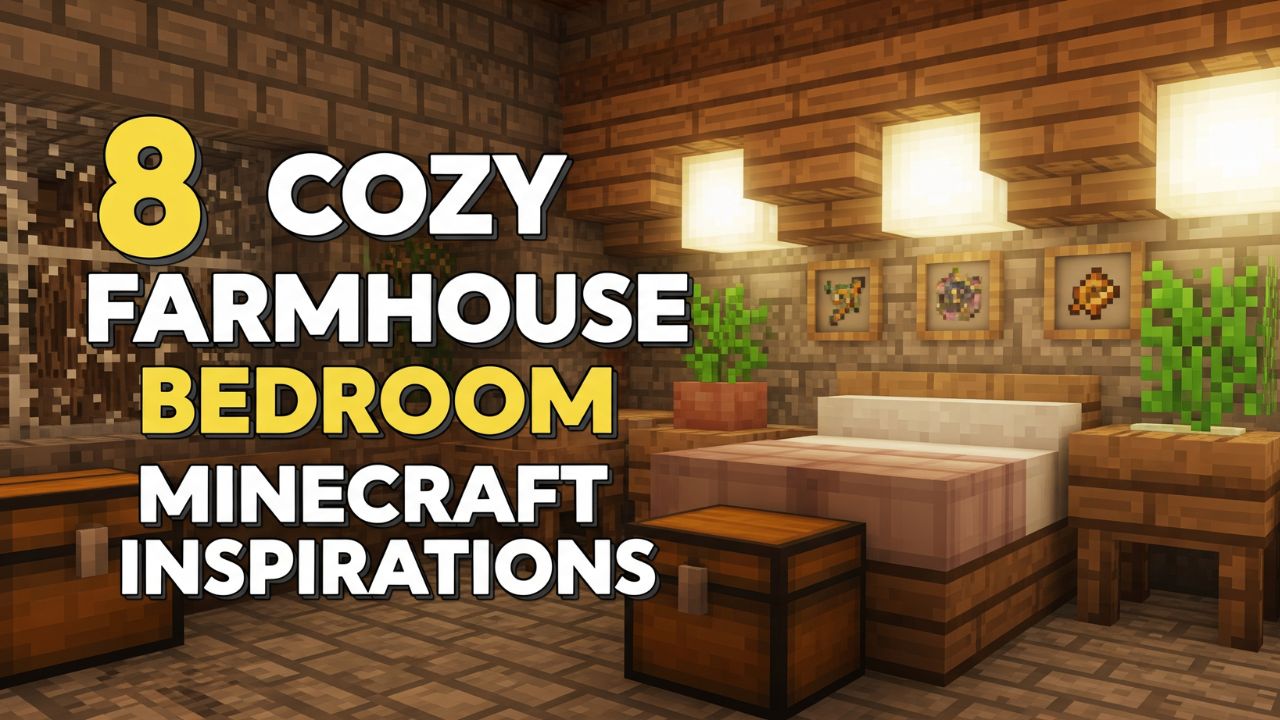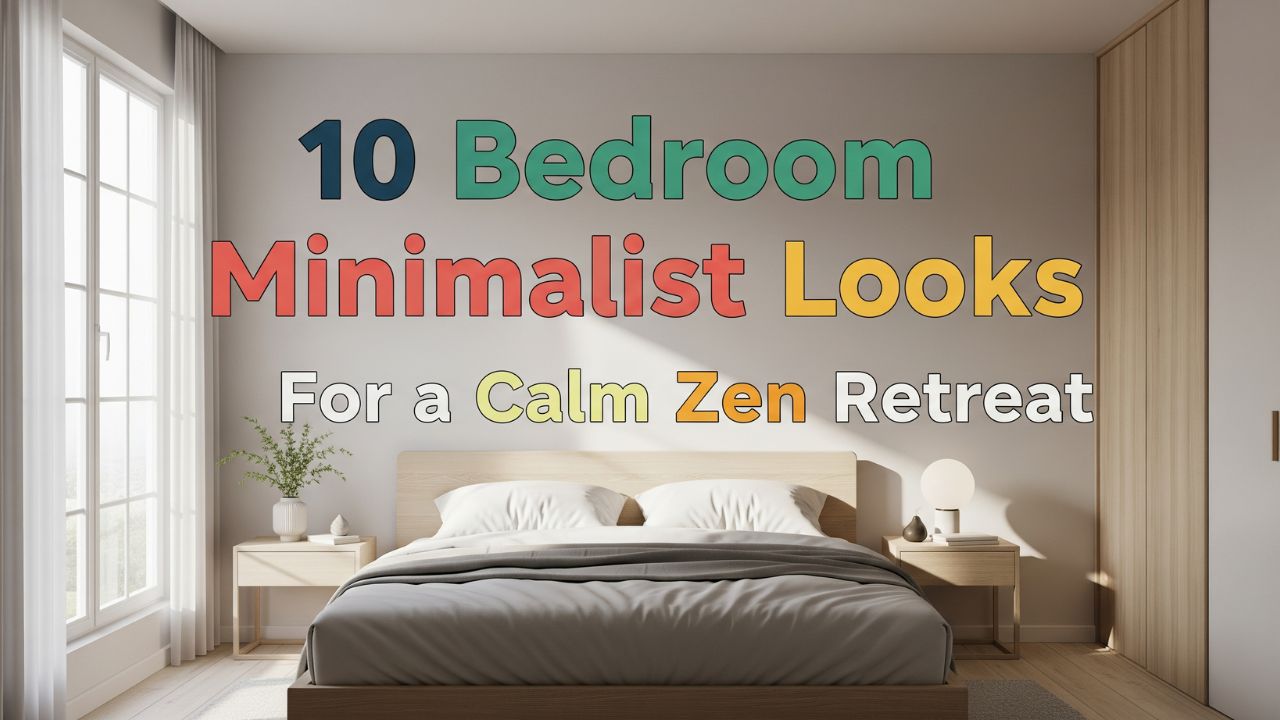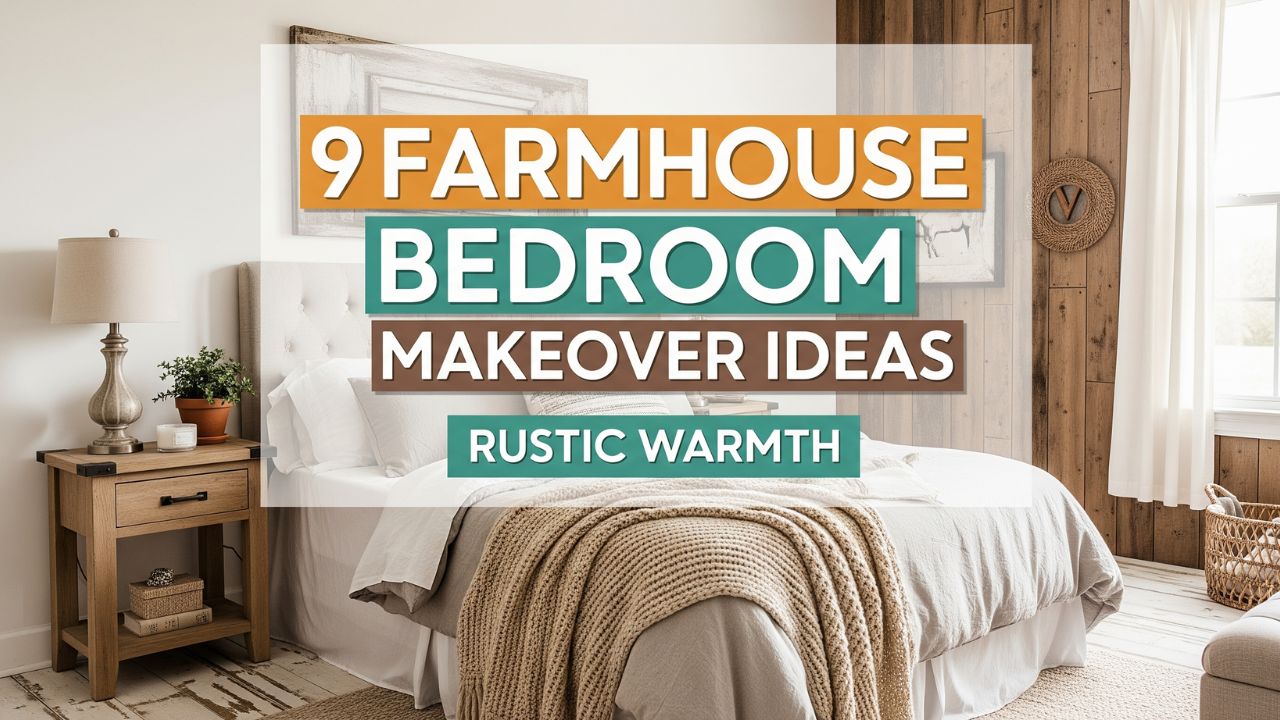Some links in this post are affiliate links. If you make a purchase through these links, I may receive a small commission. This helps support the site at no extra cost to you.
When it comes to decorating your living room, patterns can either make your space feel vibrant and dynamic or chaotic and overwhelming.
But what if you could master the art of mixing patterns in a way that feels stylish, cohesive, and inviting?
Many people shy away from combining different prints because they fear clashing colors or mismatched designs, yet the truth is that thoughtful pattern mixing can transform a dull living room into a showstopper.
Do you know that the human eye is naturally drawn to patterns, symmetry, and rhythm? Using patterns strategically in your living room not only enhances visual interest but also creates depth, warmth, and personality.
From geometric shapes to floral prints, stripes to abstract designs, there’s a world of patterns waiting to elevate your space.
Let’s explore 12 creative ways to mix patterns in your living room décor and turn your home into a masterpiece of style and harmony.
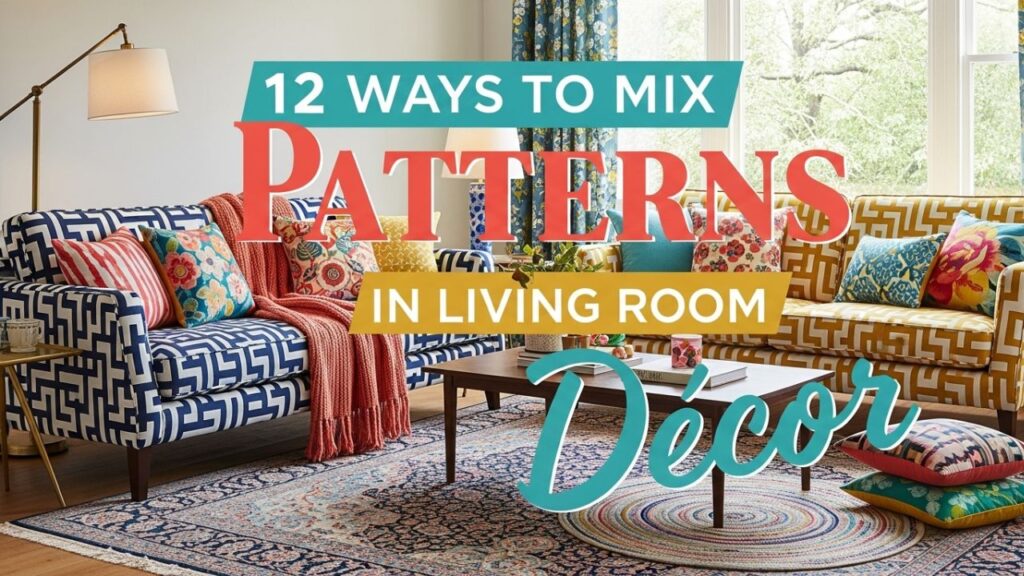
Table of Contents
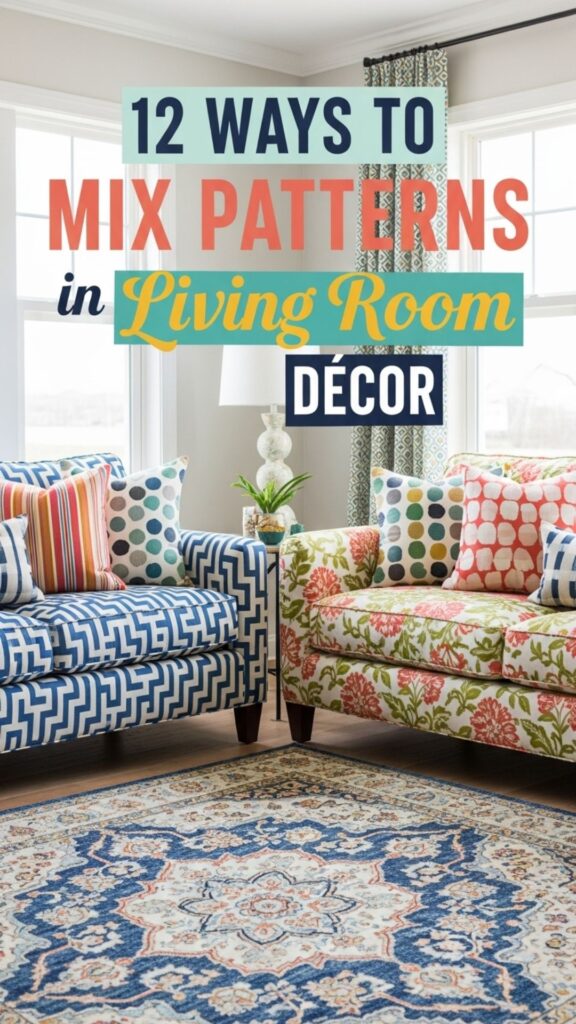
12 Best Ways To Mix Patterns
1. Stick to a Color Palette
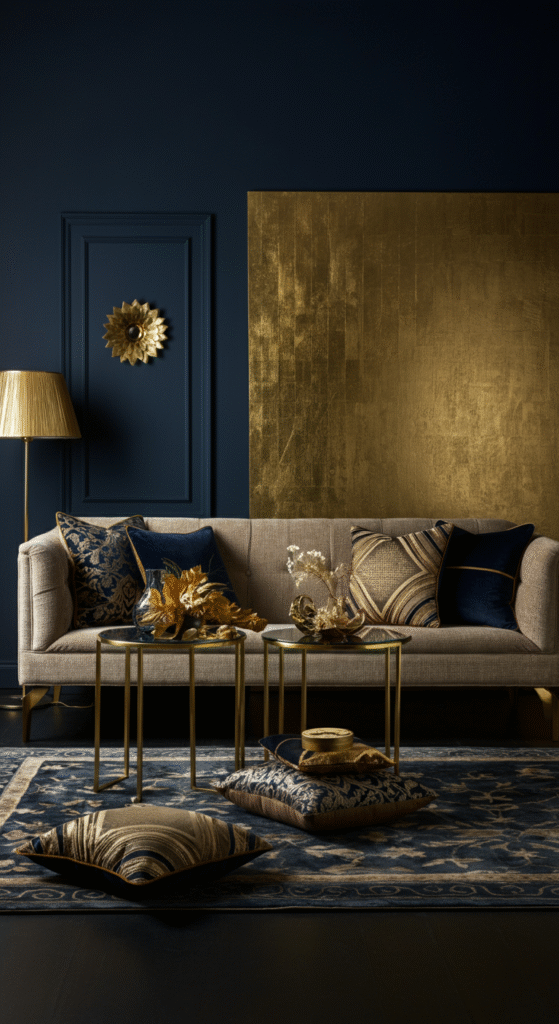
One of the easiest ways to mix patterns successfully is to start with a unified color palette. Choose 2–3 primary colors and use them consistently across different patterns in your furniture, rugs, curtains, and accessories.
For example, if your main colors are navy, beige, and gold, a geometric navy rug can pair beautifully with a floral beige sofa cushion that has gold accents. The consistent color thread ties everything together without making the room feel chaotic.
Interesting fact: Designers often use a 60-30-10 rule when combining patterns in a space: 60% dominant color, 30% secondary color, and 10% accent color. This simple rule can help you avoid overloading the room with competing patterns.
2. Mix Large and Small Patterns
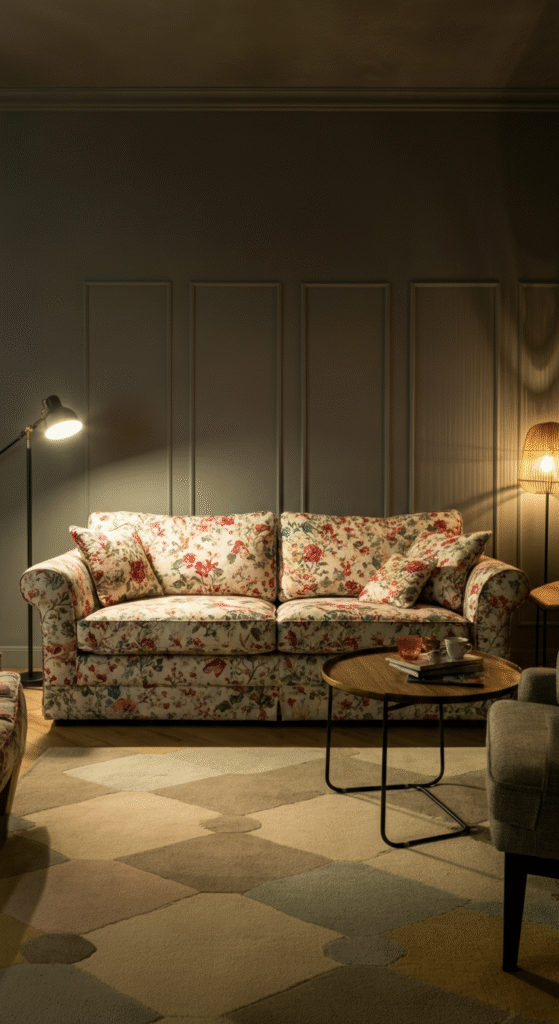
When mixing patterns, contrast is key. Pairing a bold, large-scale print with a smaller, subtler pattern creates visual balance.
For instance, a large floral sofa can be complemented by small, polka-dotted cushions or a delicate striped throw. This contrast adds depth and prevents any single pattern from overwhelming the room.
Do you know that humans are naturally drawn to contrasts? Mixing large and small patterns taps into this psychological response, making your space more visually stimulating.
3. Combine Different Pattern Types
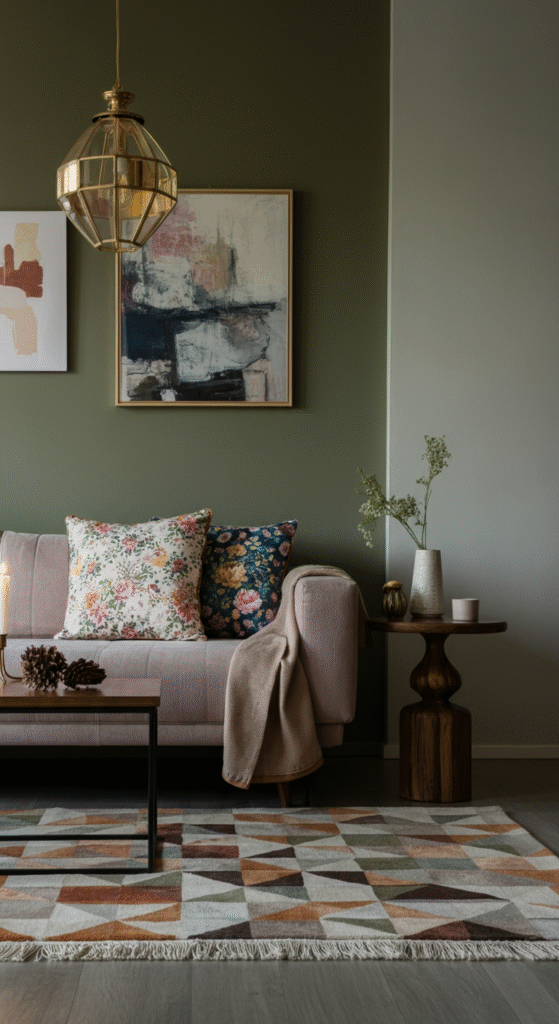
Patterns can be broadly categorized as geometric, floral, abstract, stripes, and solids with texture. Combining different types of patterns can create a curated and dynamic look.
Try pairing a geometric rug with floral cushions or an abstract wall print with striped curtains. The key is to vary the pattern type while maintaining a harmonious color scheme.
Myth busted: Many people think mixing floral with geometric is a design “no-no.” In reality, contrasting pattern types can create one of the most sophisticated and balanced living rooms when done thoughtfully.
4. Use Neutrals as a Break
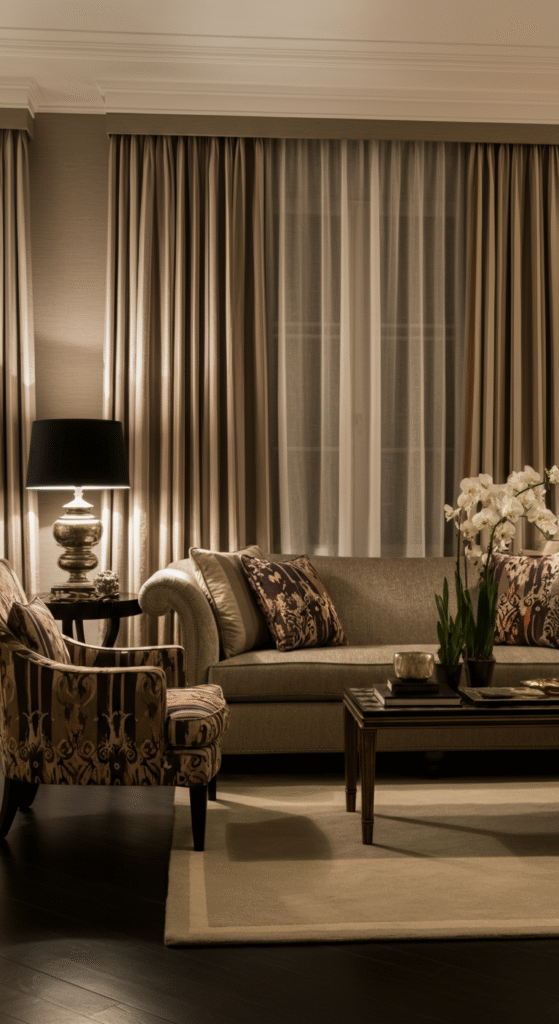
Neutral colors act as a visual resting place between patterns. If your living room has multiple bold prints, incorporating neutral pieces like a beige sofa, white coffee table, or gray curtains can prevent sensory overload.
Neutrals also help highlight patterns rather than compete with them. For example, a patterned rug pops more against a neutral floor or neutral-toned furniture.
5. Match Patterns Through Texture
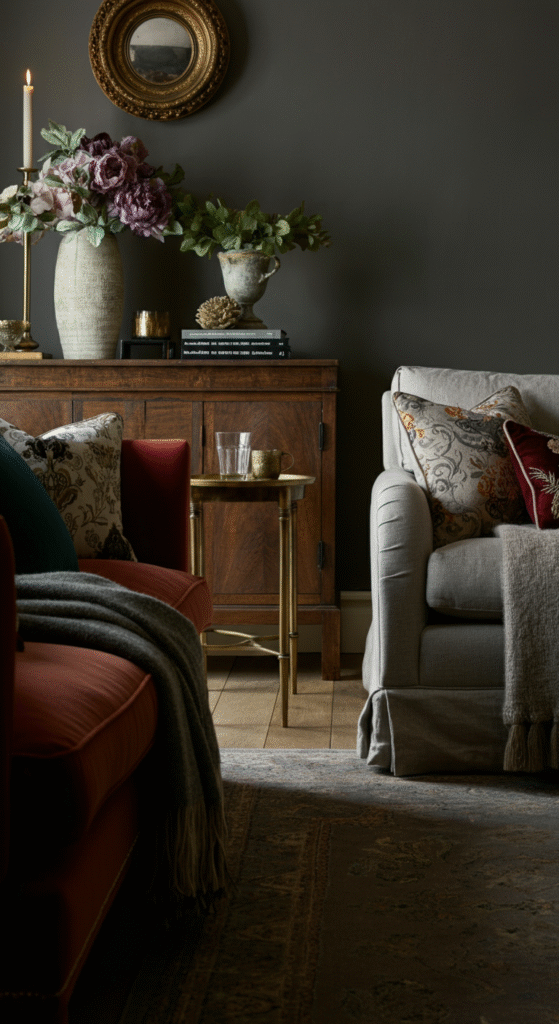
Sometimes, the link between patterns isn’t just color or design—it’s texture. Combining different textures with patterns can create a multi-dimensional, cozy look.
Consider a velvet patterned cushion on a linen-patterned sofa or a silk floral curtain paired with a wool geometric throw. The tactile contrast adds sophistication and a tactile layer of comfort.
Do you know that humans can perceive texture visually as well as through touch? Your brain interprets textured patterns as richer and more inviting, even before you touch them.
6. Repeat a Motif
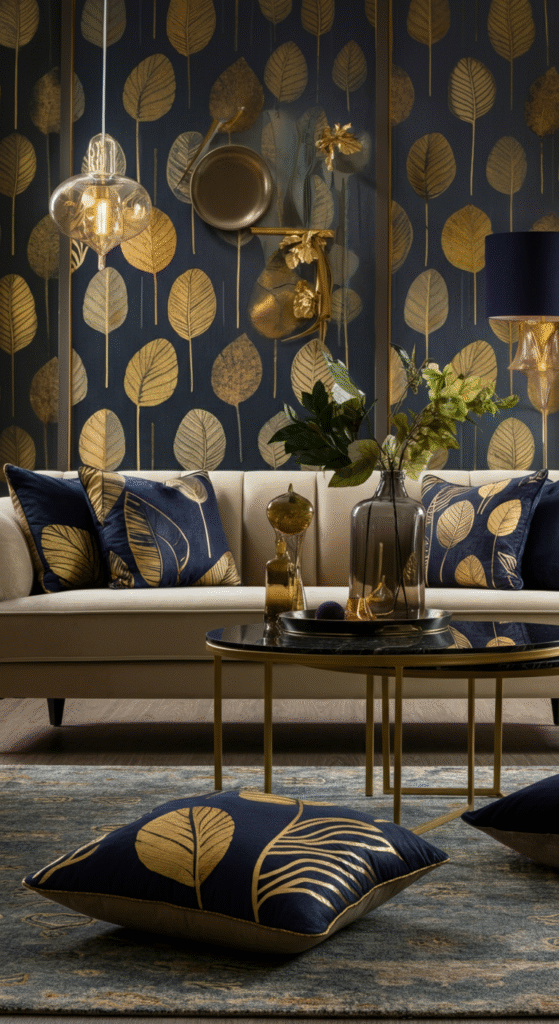
Repeating a specific motif across multiple patterns in the room creates cohesion. For instance, if your room features a leafy motif on a throw pillow, include a similar motif on a rug or wall art.
This subtle repetition gives a sense of intentionality and harmony, making pattern mixing feel curated rather than random.
Interesting fact: Interior designers often use motifs to guide the eye around a room, creating a sense of rhythm and flow that feels natural.
7. Introduce Stripes for Structure
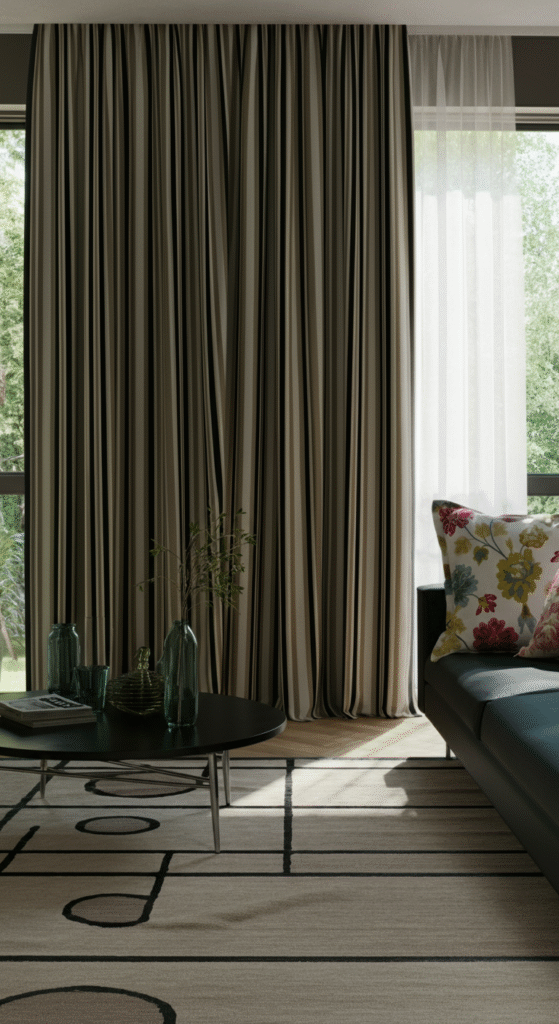
Stripes are a powerful tool when mixing patterns because they provide structure and stability to a space. Vertical stripes on curtains or furniture can elongate the room, while horizontal stripes on a rug or cushions can ground it.
Try pairing stripes with florals or abstract patterns. The linear quality of stripes balances the organic, flowing nature of other prints, creating a visually pleasing combination.
8. Use One Statement Pattern
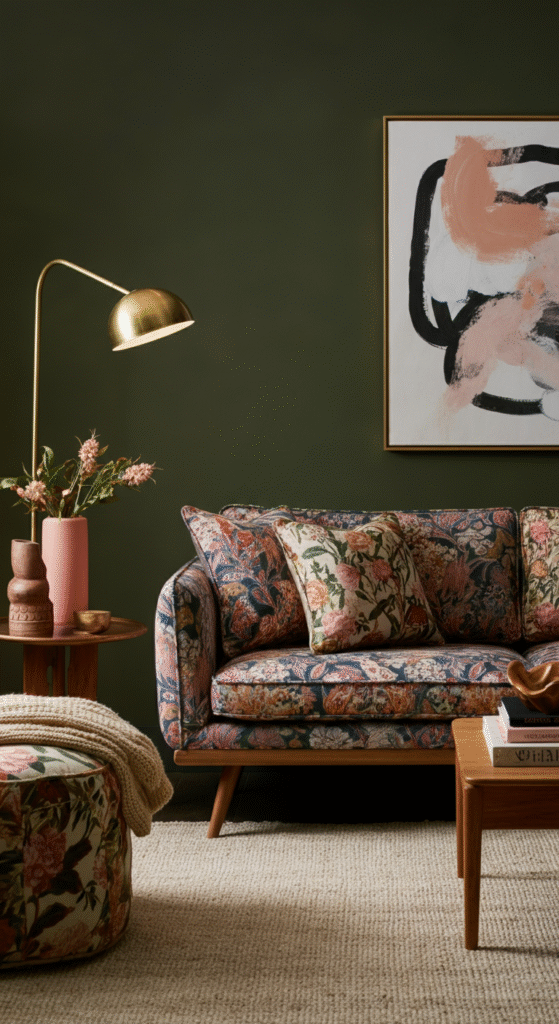
If you’re hesitant about pattern mixing, start with a single statement pattern and build around it with simpler prints. For example, a bold patterned sofa can be paired with small, subtle patterns on cushions or a solid-colored rug.
The statement piece anchors the room, while the complementary patterns create depth without chaos.
Do you know that statement patterns often become the focal point of a room, naturally drawing attention and setting the mood? This technique can also help guide your choice of accent colors and secondary patterns.
9. Mind the Scale
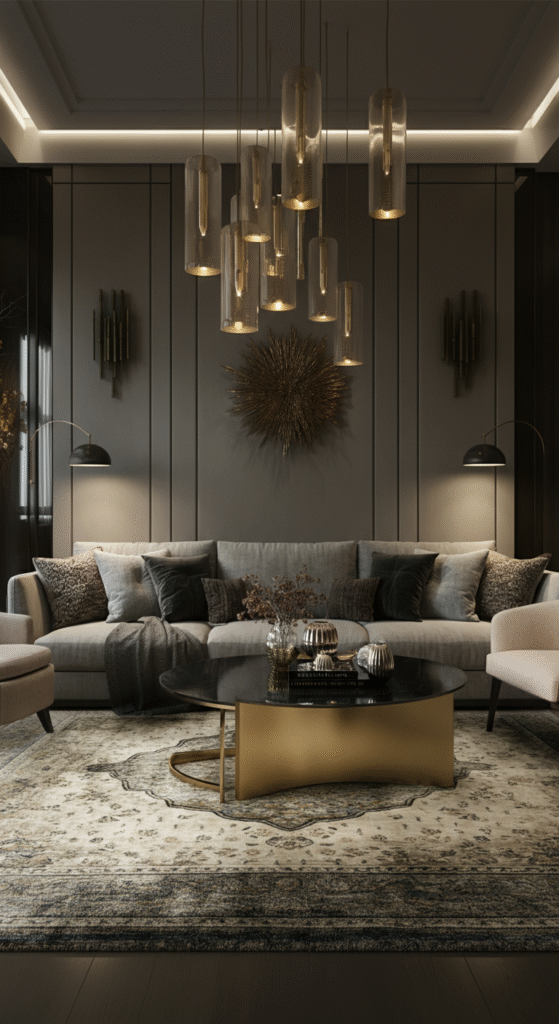
Scaling patterns correctly is critical. Large patterns work well on walls or big furniture, while small patterns are ideal for accessories like pillows, throws, and small décor items.
Mixing patterns of similar scale can make the room feel busy or overwhelming. Instead, contrast large and small patterns, or use medium-scale prints as a bridge between them.
10. Mix Modern and Traditional Patterns
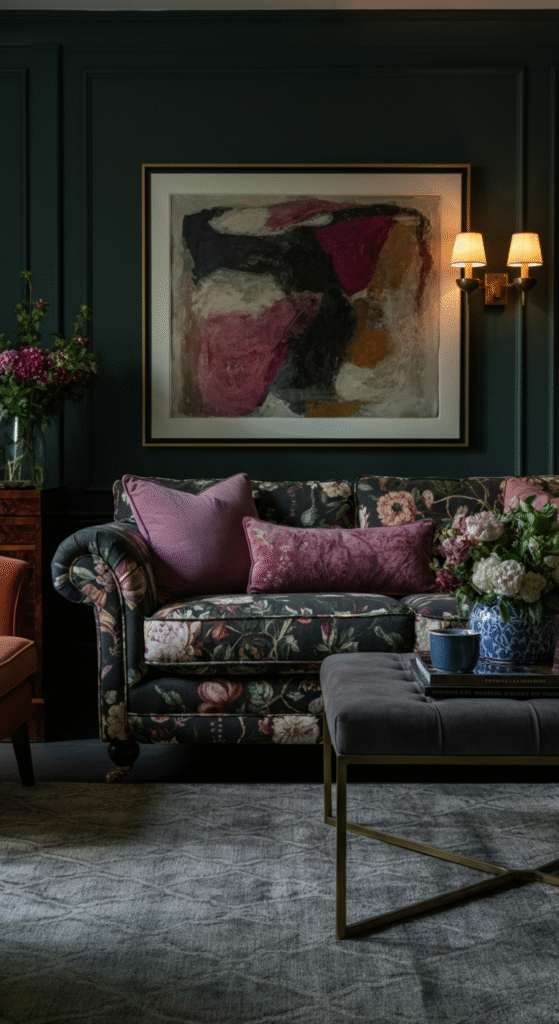
Combining modern and traditional patterns can create a timeless yet eclectic look. Pair a contemporary geometric rug with traditional floral upholstery, or a classic damask wallpaper with abstract prints.
The blend of eras adds richness to your décor, making your living room feel curated and layered.
Myth: Mixing old and new patterns will always clash. In fact, deliberate contrast between traditional and modern prints is a hallmark of professional interior design.
11. Layer Patterns Through Accessories
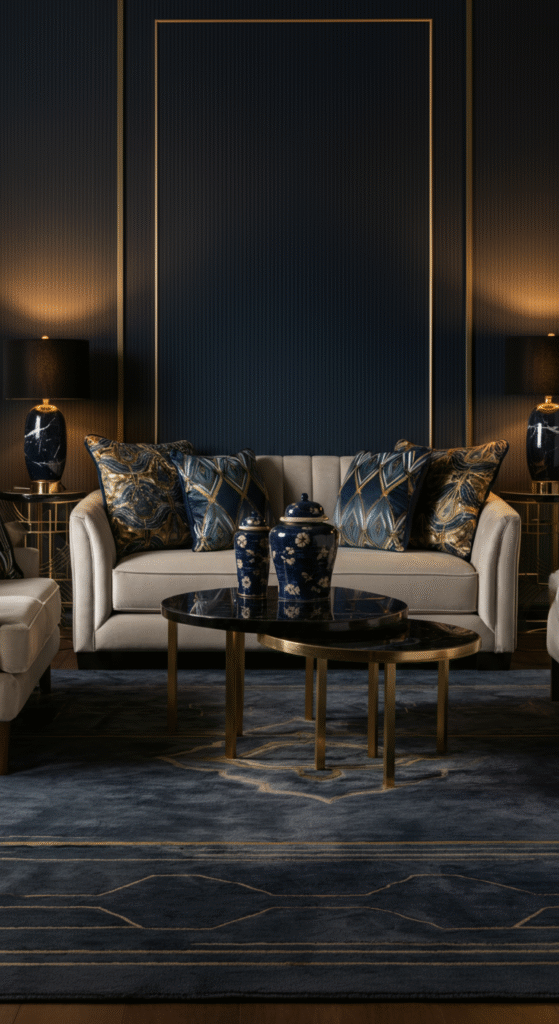
Patterns don’t need to be confined to furniture or walls. Accessories like cushions, throws, lampshades, and even vases can introduce subtle patterns into your living room.
Layering smaller patterned accessories over a neutral or patterned backdrop allows you to experiment without overwhelming the space.
Do you know that adding patterned accessories can be the fastest way to update your living room décor for a new season or trend? Swapping a few items can completely change the vibe.
12. Trust Your Instincts and Play
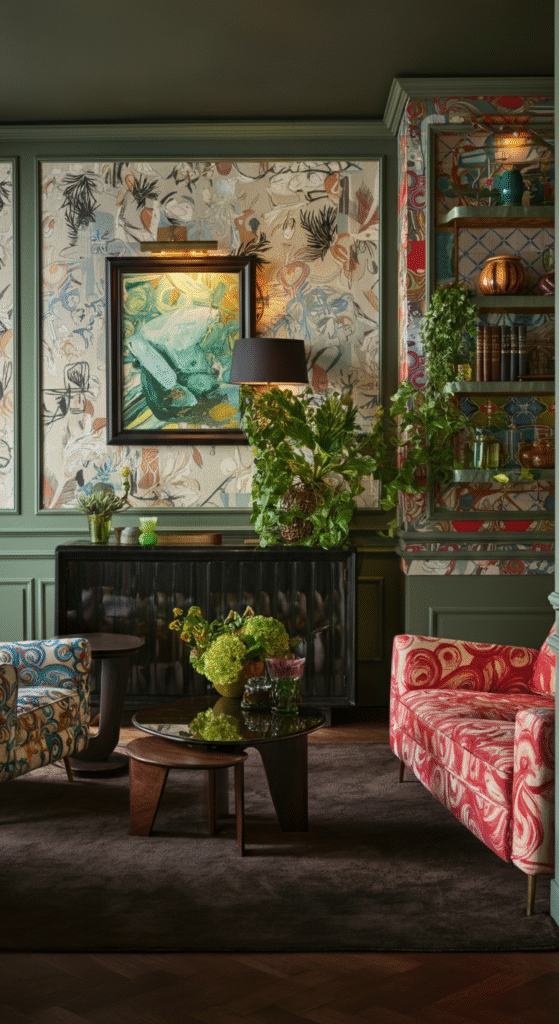
Ultimately, pattern mixing is about personal expression. Don’t be afraid to experiment. Try combining unexpected prints, mixing colors you love, and layering textures until your space feels comfortable and inspiring.
Fun fact: Many design experts encourage taking photographs of your arrangement. Sometimes patterns that look fine in isolation clash in person, and the camera can reveal new insights.
Conclusion
Mixing patterns in your living room is an art that combines color, scale, texture, and personality. By following these 12 strategies, you can create a space that feels dynamic, harmonious, and uniquely yours.
From sticking to a color palette to layering textures and introducing statement patterns, every choice contributes to a cohesive, inviting, and visually interesting environment.
Remember, pattern mixing isn’t just about rules—it’s about expression. Experiment, trust your instincts, and enjoy the process of transforming your living room into a space that tells your story, one pattern at a time.
Frequently Asked Questions (FAQs)
Can I mix patterns if I have a small living room?
Yes! In small spaces, it’s best to stick to a cohesive color palette and mix small- to medium-scale patterns. Avoid using too many bold patterns at once, as they can make the room feel cramped. Instead, layer subtle patterns with neutrals for depth.
How do I avoid clashing patterns?
Stick to a unified color palette, vary the scale of patterns, and mix different types (geometric, floral, abstract). Using neutrals as a buffer can also help create harmony between prints.
Can I mix more than three patterns in one room?
Yes, but be cautious. Use one dominant pattern, a secondary pattern, and a smaller accent pattern to maintain balance. Accessories like cushions, throws, and rugs are ideal for introducing extra patterns without overwhelming the space.
Are there patterns that should never be mixed?
There’s no strict rule, but very busy or loud patterns can clash if combined without a unifying element like color or scale. The key is balance—contrast and cohesion are essential.
How can I introduce patterns if my furniture is plain?
Accessories are your best friend! Cushions, rugs, curtains, wall art, and throws can add patterns to a plain sofa or neutral furniture. Start small and layer patterns gradually.
